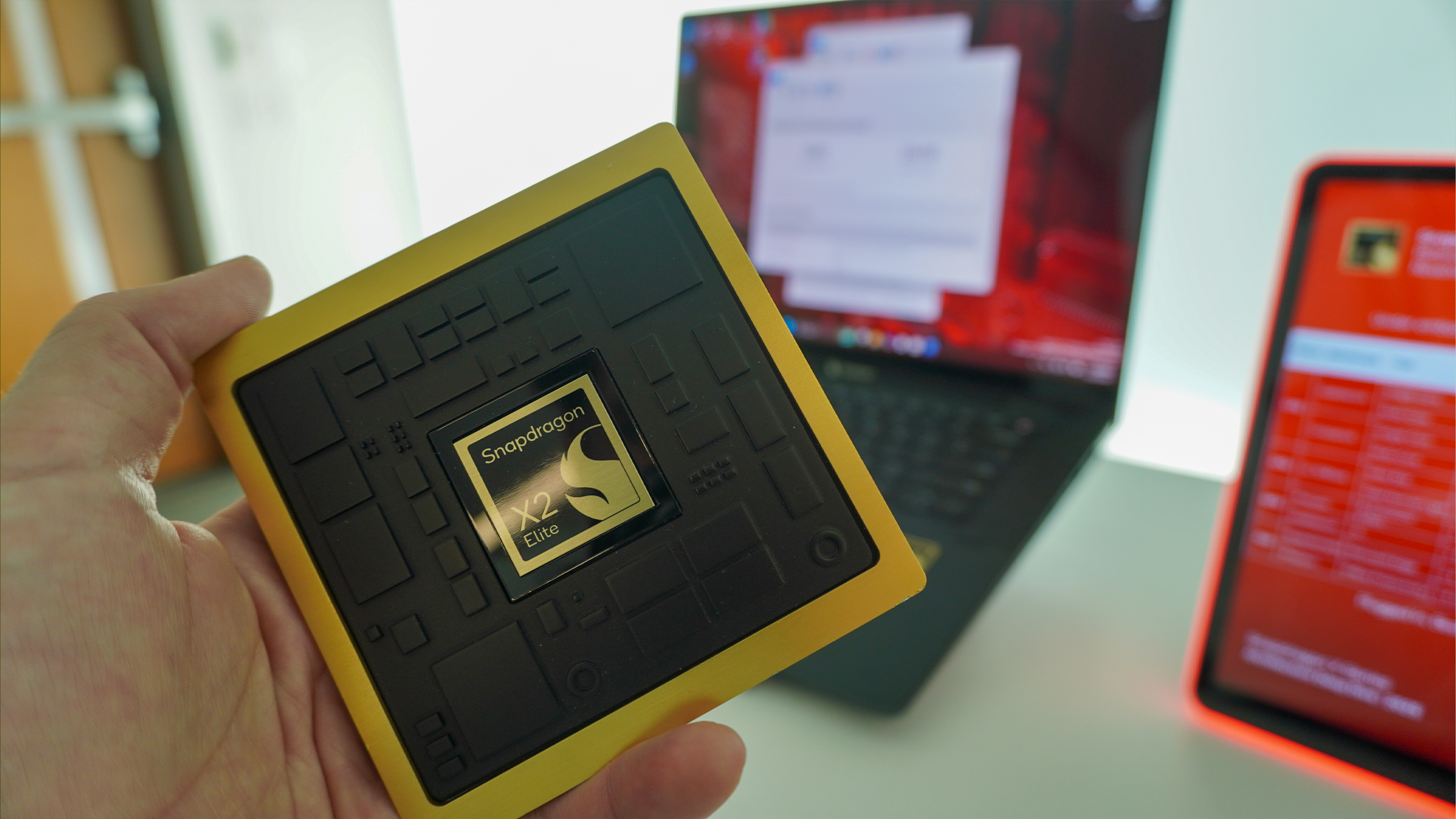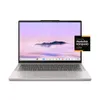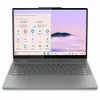I just tested the new Snapdragon X2 Elite laptop chips — and Apple, Intel and AMD should be worried about 2026

The laptop chip war of 2026 is really starting to heat up, and out of all the options I’ve tested like Apple’s M5 and Intel Panther Lake, Snapdragon X2 Elite looks like it could be a real threat.
Qualcomm flew me out to their campus in San Diego and took me properly behind the scenes on how this new generation of notebook silicon has been designed, tested, and gave me a chance to benchmark it.
And I mean really benchmark it. Usually at these events, you get cherry picked demos with vague numbers to really shine a new chip in its best light. However, here, we got three reference design laptops:
- 12-core Snapdragon X2 Elite laptop with 32GB RAM — running at 22W
- 18-core Snapdragon X2 Elite laptop with 32GB RAM — running at 22W
- 18-core Snapdragon X2 Elite Extreme laptop with 48GB RAM — running at 45W
So realistic representations of the kinds of laptops you will get sporting these chips next year. Not only that, but the benchmark tests I’ve been able to do are the same ones we use to test laptops here in Tom’s Guide labs. Now we have a clear view of things, and it’s scary fast.
What’s new in X2 Elite?
With the Snapdragon X2 Elite, Qualcomm may be sticking to the same system-on-a-chip design over moving to dedicated chiplets on a system (like Intel Panther Lake). But drastic upgrades have been brought to the table nonetheless.
You’ll find more than 31 billion transistors put together on a 3nm process. With all these additional transistors, the company has added some impressive new features here:
- The 3rd generation Oryon CPU prime cores are 39% faster single-core speeds, whereas the performance cores pack up to 50% faster in multi-core.
- Memory (RAM) being embedded directly on the chip allows for 69% more memory bandwidth shared between the CPU, GPU and NPU.
- Speaking of NPU and GPU, the new Hexagon AI engine is up to 78% faster in AI tasks, and the GPU offers up to a whopping 2.3x faster graphics performance.
But alongside these performance uplifts, Qualcomm managed to sneak a couple of extra elements onto this chip. First, a new low-power island handles essential tasks when the laptop is asleep — further reducing the amount of power draw when the lid is closed.
Get instant access to breaking news, the hottest reviews, great deals and helpful tips.

Second, a new sensing hub is essentially a low-power chip within a chip (with its own eNPU) to handle things like enhancing webcam picture, speaker quality and WiFi connectivity.
Then comes the Snapdragon Guardian Technology — a new piece of architecture that allows you to find your laptop anywhere, remotely lock and wipe it. Think of it like Apple’s Find My, but even better because X2 Elite now packs support for 4G and 5G cellular connectivity.
Snapdragon X2 Elite benchmark results

Let’s kick off with the obvious test — Geekbench 6.5. This is an effective way to test both single-core speed (how fast you can navigate the UI and open apps), and multicore (complex tasks like rendering or loading multiple objects).
Geekbench benchmark results
As you can see, the X2 Elite surpasses Intel and AMD in single-core speeds, and even manages to keep up with Apple’s M5. But it's in those multi-core speeds where you’ll really see these chips start to peel ahead.
In fact, I think the Elite Extreme is gunning for the future in the rumored M5 Pro chip coming next year. These are mightily competitive chips.
Then there’s AI performance, and as you can see in Geekbench AI 1.5, the new generation of NPU in the X2 Elite lineage, sporting 80 TOPS of performance, frankly embarrasses the competition.
Geekbench AI benchmark results
Intel’s Panther Lake needs to pull something seriously good out of the bag here to come close to this, as Team Blue did talk about the next-gen chips being built for agentic AI. Qualcomm has the receipts to back up that the X2 silicon is more than ready for this.
Not losing performance when disconnected

Why do people pick MacBooks? I know there are a few reasons, and one of them for me is the same zippy performance both when plugged in and disconnected from the charger. It’s a small thing when I say it out loud, but you can really start to feel some sluggishness from the likes of an Intel laptop that turns the total wattage down to preserve battery life.
The ARM architecture preserves those speeds while slow sipping the juice, and that much was obvious in my own testing too:
Geekbench benchmark plugged in vs battery results
Qualcomm acknowledges that you’ll get around 97-99% of the same performance on battery, which, in my time using these laptops, is barely negligible.
X2 Elite at the front of the pack?

So here’s the ultimate question. Do these numbers indicate a chipset primed to take Windows laptops into the future? The question comes down to your particular use cases for it.
Because there are drawbacks to going ARM over the x86 of Intel and AMD. For those not in the know, Microsoft systems have run on x86 chips for the better part of 30 years, and that is a huge history of ecosystem support that needs to be forced through Prism emulation to work on Arm.
What this means is a degradation in performance that brings certain apps back in line with the speeds you get from Intel and AMD laptops. However, the list of apps that have been rebuilt for Arm is ever-growing.
If compatibility is crucial, there are still some difficulties that may impact you. However, there’s a good chance that many of you won’t see this problem, given how many are on the list. In terms of a strong all-rounder of a chip that can do it all in Windows and take the fight to Apple, Qualcomm looks prime to be in the driving seat.

Follow Tom's Guide on Google News and add us as a preferred source to get our up-to-date news, analysis, and reviews in your feeds.
More from Tom's Guide
- I’m shocked at how well Snapdragon X2 Elite can play games with Cyberpunk hitting over 75 FPS in my testing
- The M5 MacBook Pro just came out and it's already $100 off in this killer Black Friday deal!
- I just tested Mixed Reality Link for Windows 11 with my Meta Quest 3, and it’s shockingly good for a free feature

Jason brings a decade of tech and gaming journalism experience to his role as a Managing Editor of Computing at Tom's Guide. He has previously written for Laptop Mag, Tom's Hardware, Kotaku, Stuff and BBC Science Focus. In his spare time, you'll find Jason looking for good dogs to pet or thinking about eating pizza if he isn't already.
You must confirm your public display name before commenting
Please logout and then login again, you will then be prompted to enter your display name.










